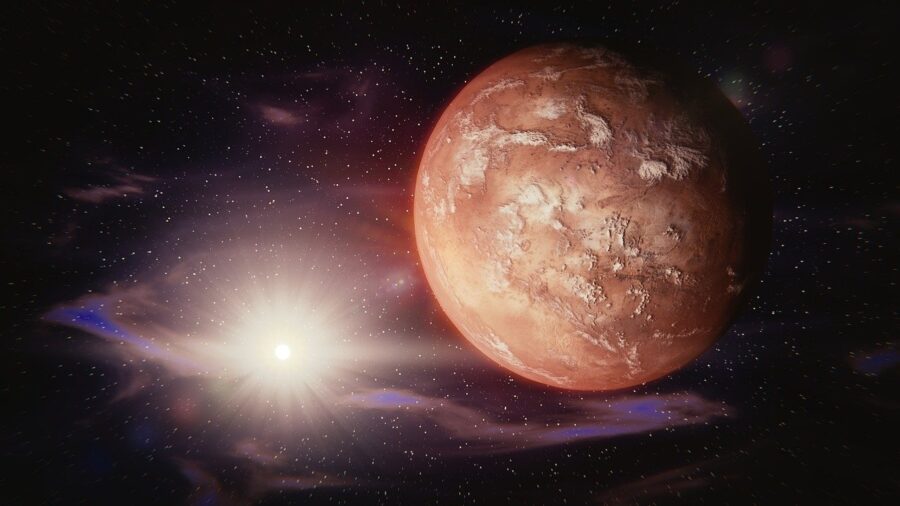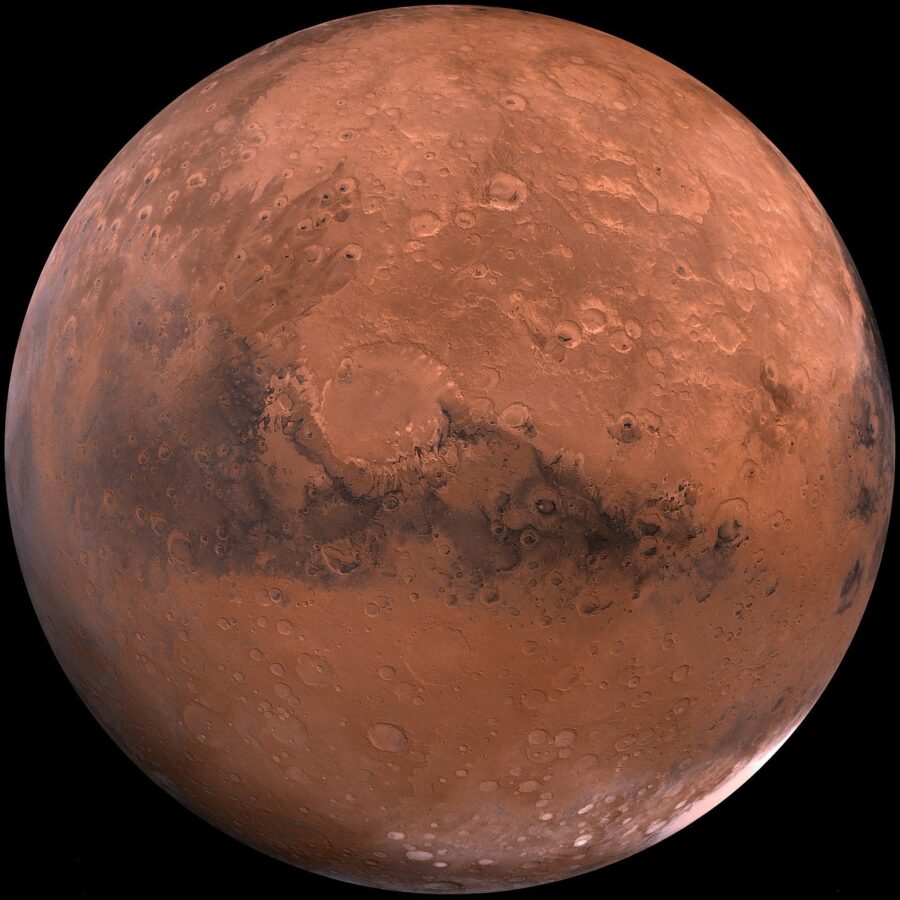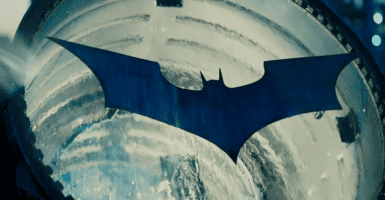One Of Mars’s Moons Is Going To Crash Into The Planet
It's looking very much like one of the moons of Mars is going to break into pieces and actually crash into the red planet.

Ever been able to see a moon crash all the way into a planet before? Me neither, but one day folks might get that very chance. Though it’s going to take a while. Scientists believe that it is going to happen on Mars with the prediction that one moon, Phobos, is on a path to eventually spiral into the planet if it keeps up its current orbital path. It should be quite the sight once it eventually happens, descending onto the red planet and going kaput. The whole scenario sounds like something out of a science fiction movie.
NASA released a statement this week (via Futurism) that discussed the ongoing exploration of Mars through the Perseverance rover as well as the gravitational aspects that Phobos has on Mars. The oddly shaped satellite had been part of a solar eclipse earlier in the month and NASA scientists took the time to remind folks that Phobos was “doomed” on its current orbital path. While this crashing into Mars isn’t likely to happen anytime soon, the current prediction is something like 30 million years, there seems to be a consensus that the fate of the moon is already pretty set even if it’s well off into the future.
While most agree that Phobos doesn’t have “long” for this solar system in terms of its lifespan, there is some disagreement around what will eventually happen to the moon. Some think that on its current orbital path, eventually it will crash into Mars with the moon breaking up and the pieces actually hitting the surface. But there is another thought that as it gets closer and closer to Mars it will eventually break up into pieces. And then those pieces will form an interplanetary ring around the planet. Only the pieces of the moon with very strong cohesion will be strong enough to enter Mars’s atmosphere and eventually make impact with the planet.

Some reasons Phobos has been intensely studied is that it has an unusual orbital path around Mars with its makeup and origin still not 100% confirmed. It is oddly shaped, looking almost like a potato, and actually moves around Mars in what appears to be below the synchronous orbit radius. This means it has the odd path of moving around Mars faster than the planet actually rotates. This has the effect of actually moving across the sky (if you are standing on Mars) twice per day rather than say, our moon, which completes that cycle just once per day.
With the timing of Phobos’s demise still way (way, way) off in the future, there’s some chance humans will be able to observe the Mars moon for themselves at some point while actually standing on the planet. NASA has said they think there’s a chance the first human will go to Mars sometime in the 2030s. That might be ambitious all things considered, but there’s little doubt it will happen eventually. And there’s still time to check out Phobos with its odd path and shape. It’s going to crash into Mars, but not for millions of years.












